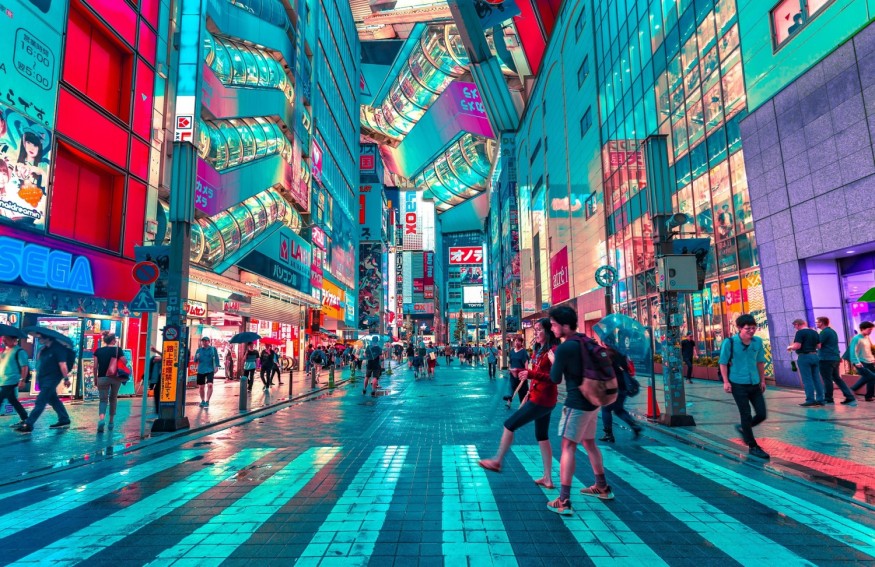Tokyo Gendai Prepares for Second Edition As Japan’s Art Market Heats Up

The art scene was abuzz on a drizzly Tuesday evening in Tokyo's vibrant Roppongi district. Artists, collectors, dealers, and enthusiasts gathered for gallery openings, mingling in a neighborhood teeming with local and international art spaces. Among the celebrated venues were the homegrown ShugoArts and Taka Ishii and foreign heavyweights like Perrotin, which offered champagne, canapés, and frozen ice desserts at their store. Perrotin unveiled a new, intimate salon-style space upstairs, adding to the excitement.
Tokyo Gendai Week
This event marked the beginning of what could be called Tokyo Gendai Week. It is named after the art fair that launches its second edition on Thursday at the Pacifico Yokohama convention center, located about an hour south of central Tokyo. Magnus Renfrew, the fair's founder, and London gallerist Sadie Coles, a participating dealer, were present among the local art crowd.
Reports from the inaugural edition last year were optimistic, but the real challenge for any art fair is its sophomore year. This edition faces additional hurdles: the global art market has shifted since 2023, with many previously hot young artists seeing a decline in their market appeal. Additionally, while beneficial for American buyers, the dollar's strength against the yen could pose challenges for dealers selling to local collectors in dollars.
Long-Term Investments
Despite these complications, art fairs are a long-term investment, and signs indicate that Tokyo's art market is on the rise. Perrotin's expansion and the preview of Pace Gallery's upcoming Tokyo branch, set to open in September, underscore the growing importance of the Japanese capital. With his experience founding Art HK (which later became Art Basel Hong Kong), Renfrew understands these market dynamics well. 2007, no mega-galleries had a presence in Hong Kong, but by 2011, Gagosian had opened a space, followed by other major galleries.
As of now, it is apparent that there has been a change from a region-based art market known in many Asian countries, especially in Hong Kong. For example, in 2019, Gagosian will show in Seoul for the first time concurrently with the third Frieze Art Fair in Seoul and new paintings of Derrick Adams at the Amorepacific Museum of Art; Pace has had a permanent location in Seoul since 2017 as this pattern of regionalization demonstrates.
Emergence of New Art Collectors
In Japan, a new generation of art collectors is gradually starting to appear, partly due to the combined influence of the Kumamoto-based entrepreneur Yusaku Maezawa, who recently bought a painting of Jean-Michel Basquiat for $110. undefined While Maezawa's speculative approach has had mixed effects, many serious collectors in Japan are thoughtfully building their collections.
The traditional art patrons, like the influential Mori family, continue to play a significant role. Yoshiko Mori now represents the family, overseeing projects like Pace's new 5,500-square-foot Tokyo gallery in the Azabudai Hills development, designed by Thomas Heatherwick. This area is a project of the Mori Building company, which has deep ties to the art world through the Mori Art Museum, established by Minoru Mori in 2003. The museum's recent Azabudai branch opening with an Olafur Eliasson exhibition highlights the relationship between Tokyo's art market and real estate development.
The first edition of Tokyo Gendai last July coincided with changes in government tax laws aimed at facilitating gallery and fair operations. This year, we will test the impact of these revisions. Renfrew has noted that Japan's art market lags behind its potential, and this year's fair will be a critical measure of progress, with implications for the years ahead.
Architecture's Response to the Seven Million Homes Shortage

Travis Scott Slams Victory Boyd in Explosive 'Telekinesis' Lawsuit: 'She Lied on Copyright'

From Digital Models to 3D-Printed Homes: Jaspreet Kaur Lall Explains How the Innovation Changes the Construction Industry

Future Belongs to Green Construction: Sampath Kumar Paspunoori Explains One of the Key Trends in the Construction Industry

Kamala Harris' Campaign Ad Uses Iconic Visuals from Carrie Mae Weems to Connect with Voters












